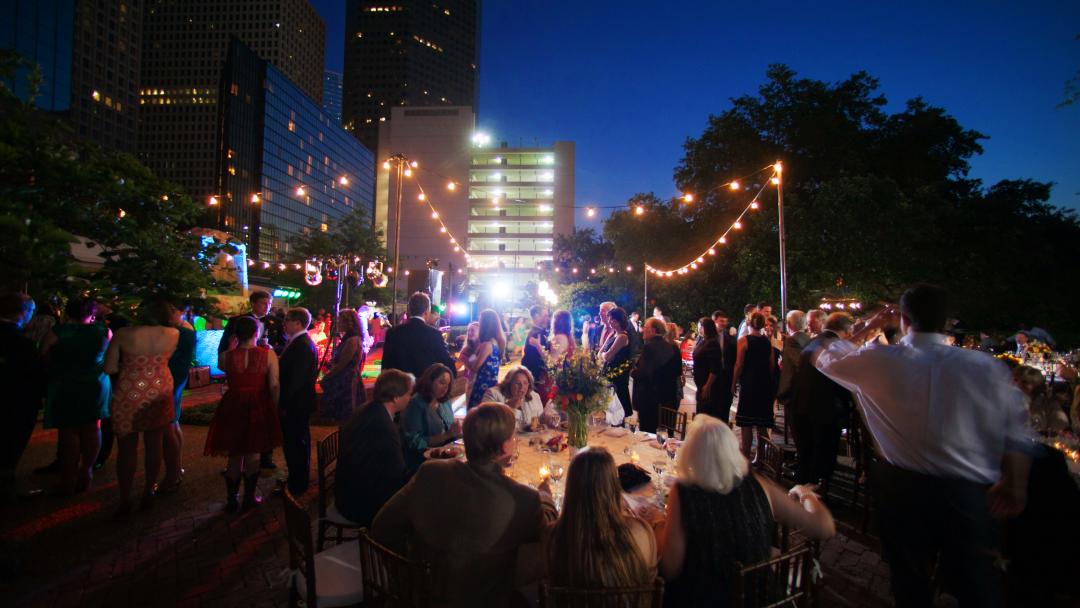By Nancy Mattia
Many things in life are hard — putting together a seating chart for your wedding reception doesn’t have to be one of them. Before you start building a chart, make sure you really need one. Less than 50 guests? You can skip it — with such an intimate group, no one will have a hard time finding a place to sit. But if you’re inviting more than 50 guests, do organize the seating; without direction, guests may look like they’re playing an adult version of musical chairs with some people sitting contentedly and others milling about looking lost.
Thinking about your guests’ comfort won’t be lost on the crowd. Says Houston wedding planner Natalie Dawley of Two Be Wed, “It’s so beautiful — you go to the [escort-card] table, and it’s nice to see your name. You think, I’m there and I mean something to the bride and groom.”
Some tips to make the job easier:
Start early. As soon as the RSVPs start arriving, begin plotting who sits where. There’s no way around taking care of this task in the final weeks before the wedding when you’ll be busy with a million other last-minute chores (arranging guest pickups from Hobby Airport, buying honeymoon bikinis at the Galleria). Waiting until all the responses come in will overwhelm you. So get started early — you can always move people around as more RSVPs come in.
Create a spreadsheet. Log all relevant info into a spreadsheet — it’s the most efficient way to keep track of everyone. Or use an online seating chart program like the one at weddingwire.com, which lets you customize a floor plan and easily move guests from Table 7 to Table 10. If your parents are involved in seating decisions, Dawley recommends making a large-format copy of the chart, put it on the dining room table, and write guests’ names on individual sticky notes that you move around. “It’s old school but a great visual that you can all see at the same time,” she says.
Make groups. Divide people into logical subdivisions, such as family members that get along, family members that don’t, your University of Houston pals, his Dell work colleagues, mutual friends, etc. Use this info as your guide, and try to keep groups together since they’re probably looking forward to catching up with one another at the wedding. If you’re inviting your parents’ friends, let your mom (and his) figure out those tables.
Don’t treat the chart like it’s match.com. You’re not setting up each table of eight for lifelong relationships. As long as you’re considerate and seat each guest with at least one person they know and like, you’ve done your job. If you can put all the equestrians at one table and all the new parents at another, great, but don’t sweat it if every table doesn’t match up people’s interests perfectly.
Avoid a singles table. Though it may seem logical, it’s more embarrassing than helpful to the single friends from different parts of your life to be dumped together at one spot; instead, seat them with couples and other singles they know. One exception: if they’re under age 10. A children’s table will go over big, especially when it’s filled with small toys and games and comes with a kids’ menu.
Don’t crowd people in. Most wedding venues and restaurants will offer tables that fit up to 10, but that doesn’t mean you should fill each to capacity. “If you have a traditional table setting with chargers, which are big, you should do tables for eight, maybe nine,” says Sarah Trevino of Sarah Lydia Events, who’s planned many Houston weddings. But don’t try to seat 10 guests at one table. “There won’t be any elbow room.”
Seat the elderly away from the noise. By “noise,” we mean not only the band or DJ but also the table of his raucous fraternity brothers, the busy entryway, the always-hopping bar and the bustling kitchen.
Rethink assigning specific seats. Just because you’re telling people which table to sit at, it doesn’t mean you’re required to pick out their exact seat too. Why not let them decide?
If you’re looking for a professional wedding planner coordinate your perfect day, browse our directory of event planners.



